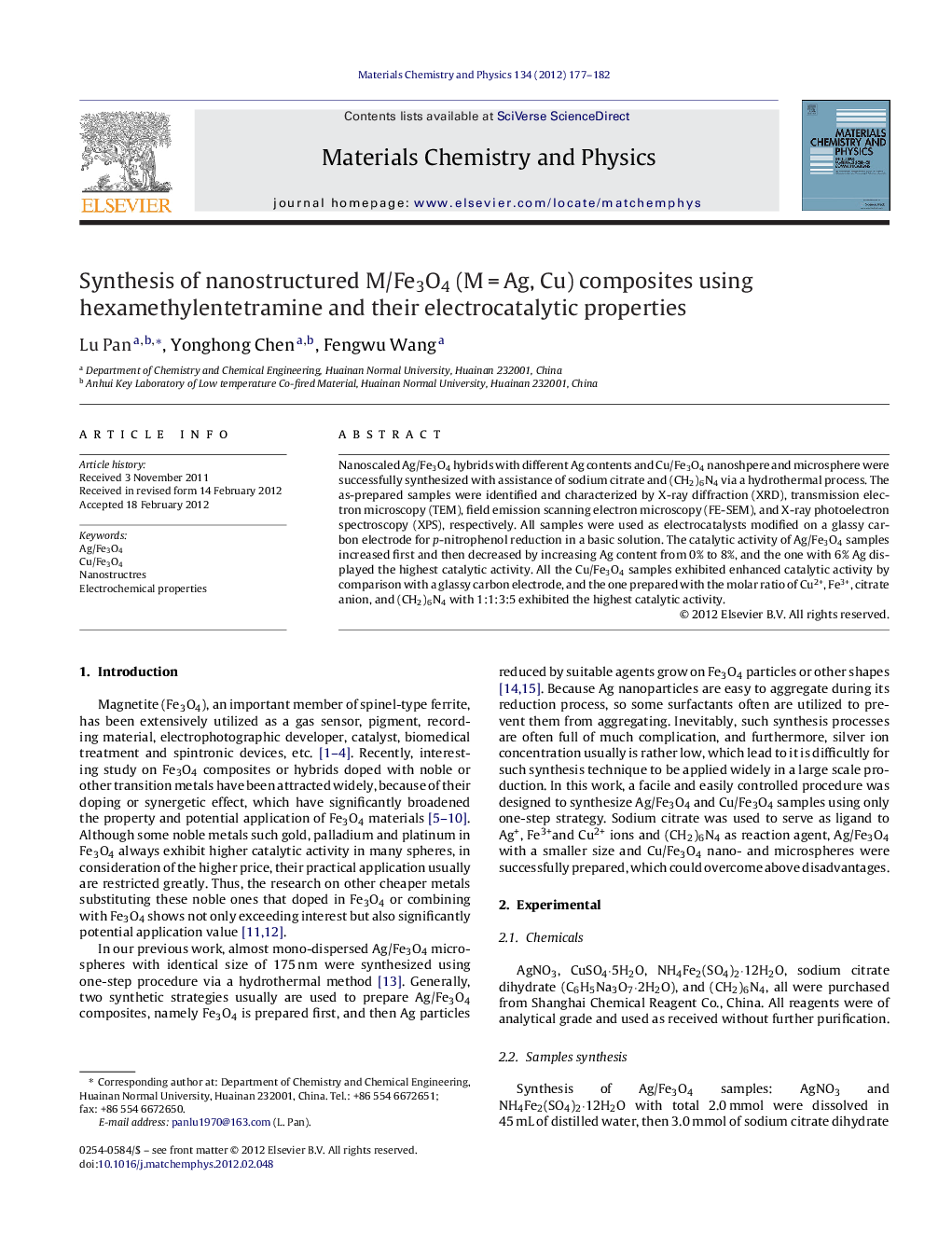| Article ID | Journal | Published Year | Pages | File Type |
|---|---|---|---|---|
| 1524000 | Materials Chemistry and Physics | 2012 | 6 Pages |
Nanoscaled Ag/Fe3O4 hybrids with different Ag contents and Cu/Fe3O4 nanoshpere and microsphere were successfully synthesized with assistance of sodium citrate and (CH2)6N4 via a hydrothermal process. The as-prepared samples were identified and characterized by X-ray diffraction (XRD), transmission electron microscopy (TEM), field emission scanning electron microscopy (FE-SEM), and X-ray photoelectron spectroscopy (XPS), respectively. All samples were used as electrocatalysts modified on a glassy carbon electrode for p-nitrophenol reduction in a basic solution. The catalytic activity of Ag/Fe3O4 samples increased first and then decreased by increasing Ag content from 0% to 8%, and the one with 6% Ag displayed the highest catalytic activity. All the Cu/Fe3O4 samples exhibited enhanced catalytic activity by comparison with a glassy carbon electrode, and the one prepared with the molar ratio of Cu2+, Fe3+, citrate anion, and (CH2)6N4 with 1:1:3:5 exhibited the highest catalytic activity.
► An easily controlled one-step synthesis was designed via a hydrothermal method. ► Ag/Fe3O4 hybrids and Cu/Fe3O4 nano- and microspheres were successfully synthesized. ► No surfactant was used in the synthesis. ► Ag/Fe3O4 hybrids and Cu/Fe3O4 were modified on a GCE directly. ► The samples all exhibited enhanced catalytic property for p-nitrophenol reduction.
